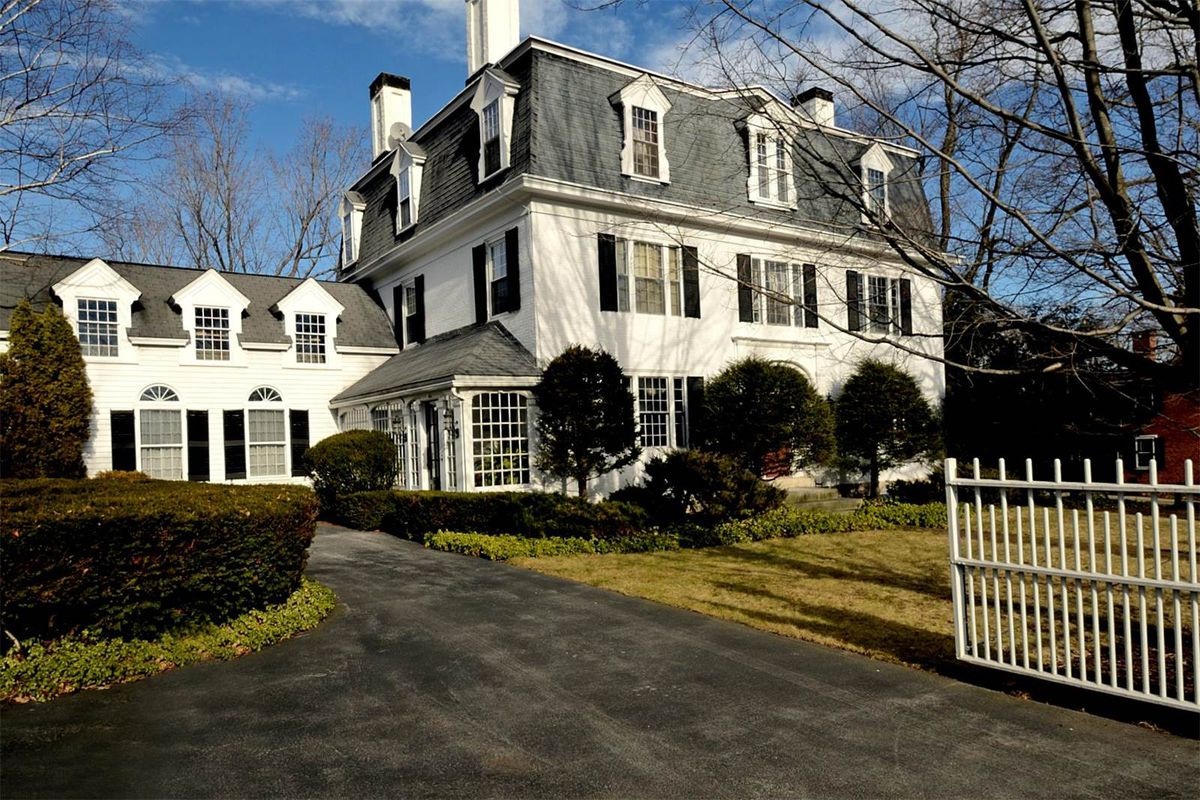
The Complete Guide to Property Restoration in Grand Rapids
Key Takeaways:
- Grand Rapids, Michigan, has historical properties that need to be maintained and restored to preserve their authenticity, contribute to the city’s identity, and generate economic benefits.
- Preserving the architectural heritage of Grand Rapids is crucial for maintaining the city’s unique identity, fostering community pride, and creating visually cohesive environments.
- Property restoration in Grand Rapids can enhance property value, attract potential buyers or tenants, and elevate the surrounding neighborhood.
- The property restoration process involves assessing the scope of work, addressing structural issues, and restoring historical features and design elements.
- Factors to consider when choosing a restoration contractor include experience, certifications, positive reviews, and the ability to work within your budget and timeline.
- Hiring a local restoration company in Grand Rapids provides advantages such as local knowledge, established relationships, and familiarity with permits and regulations.
- Examples of successful property restoration projects in Grand Rapids include the Meyer May House and the Pantlind Hotel (Amway Grand Plaza).
- Regular maintenance is important for preventing extensive damage and the need for costly restoration.
- Balance budgetary constraints and restoration needs by working closely with a restoration contractor and taking a phased approach to restoration.
- Understanding permitting and historical preservation regulations is crucial to ensure compliance and maintain the integrity of the restored property.
1. Why Property Restoration Matters in Grand Rapids
1.1 The Importance of Maintaining and Restoring Historical Properties
Grand Rapids, Michigan, is known for its rich history and stunning architecture. Many of the properties in this city have historical significance, reflecting the cultural heritage and evolution of the area. It is essential to maintain and restore these historical properties to preserve their authenticity and contribute to the city’s identity.
Historical properties have unique architectural features and design elements that tell a story. Through restoration, these properties can regain their original charm and character. By preserving historical properties, we ensure that future generations can appreciate and learn from the past, creating a sense of continuity and connection with our roots.
Additionally, restoring historical properties can have economic benefits. These properties often serve as tourist attractions, contributing to the local economy by attracting visitors and generating revenue for local businesses. The restoration of historical properties can revitalize neighborhoods and increase property values, creating a ripple effect that benefits the entire community.
1.2 Preserving the Architectural Heritage of Grand Rapids
Grand Rapids boasts a diverse architectural heritage, ranging from Victorian-era homes to Art Deco buildings. Preserving this architectural heritage is crucial for maintaining the city’s unique identity and sense of place. By restoring and maintaining these architectural treasures, we ensure that future generations can experience the beauty and craftsmanship of the past.
Architectural preservation involves more than just safeguarding individual buildings. It requires an understanding of the historical context, architectural styles, and construction techniques used during different periods. By preserving the architectural heritage, we contribute to the overall urban fabric and create a visually cohesive environment that reflects the city’s history.
Preserving the architectural heritage of Grand Rapids also fosters a sense of pride among residents. Historical buildings serve as landmarks and points of reference, contributing to a strong community identity. They provide a tangible link to the past, reminding us of our roots and the challenges faced by previous generations.
1.3 Enhancing Property Value through Restoration
Property restoration in Grand Rapids goes beyond preserving historical properties. It also includes restoring and improving the overall condition of properties to enhance their value and functionality. Whether it’s a historical home or a modern building, investing in restoration can yield significant returns.
Restoration can address structural issues, upgrade outdated systems, and modernize spaces to meet contemporary needs. By improving the functionality and aesthetics of a property, restoration can attract potential buyers or tenants, commanding higher rental or sale prices.
Furthermore, the restoration of a property can elevate the surrounding neighborhood, creating a domino effect that leads to increased property values for the entire area. When a restored property stands out, it can inspire neighboring property owners to invest in restoration, resulting in a more desirable and valuable community.
2. The Process of Property Restoration
2.1 Assessing the Scope of Restoration Work
Before embarking on a property restoration project, it is crucial to assess the scope of work. This includes identifying the areas that require restoration, evaluating the extent of damage or deterioration, and determining the necessary steps to restore the property to its original condition.
A thorough assessment involves inspecting the structural integrity, electrical and plumbing systems, as well as the historical features and design elements that need attention. This evaluation helps in creating a comprehensive restoration plan and estimating the budget and timeline for the project.
Engaging professionals such as architects, engineers, and restoration contractors can ensure an accurate assessment and provide expert guidance throughout the restoration process.
2.2 Identifying and Addressing Structural Issues
One of the critical aspects of property restoration is addressing any structural issues that may compromise the stability and safety of the building. It is essential to identify and rectify problems such as foundation damage, structural cracks, roof leaks, and deteriorated support systems. Ignoring these issues can lead to further damage and costly repairs in the future.
Structural restoration often involves reinforcing the foundation, repairing or replacing damaged beams and columns, and strengthening load-bearing walls. Hiring experienced professionals with expertise in structural engineering ensures that the restoration work is carried out effectively and in compliance with safety regulations.
2.3 Restoring Historical Features and Design Elements
Restoring historical features and design elements is a crucial aspect of property restoration, especially for preserving the authenticity of historical properties. It involves researching and understanding the architectural style, materials, and techniques used during the property’s original construction.
Restoration specialists work meticulously to recreate or repair intricate details such as decorative moldings, stained glass windows, ornamental ironwork, and original flooring. They employ traditional methods and source authentic materials to ensure an accurate restoration that respects the historical significance of the property.
Preserving historical features not only enhances the aesthetic appeal of the property but also contributes to its market value and historical significance within the community.
3. Choosing the Right Property Restoration Company
3.1 Factors to Consider When Selecting a Restoration Contractor
Choosing the right property restoration company is crucial for the success of your project. Consider the following factors when selecting a restoration contractor:
- Experience and expertise in property restoration, particularly with historical properties
- Relevant certifications and licenses
- Positive reviews and references from previous clients
- A portfolio showcasing successful restoration projects
- Ability to work within your budget and timeline
- Clear communication and transparency throughout the restoration process
Take the time to research and interview multiple restoration companies to ensure you find a reliable and qualified contractor for your property restoration project.
3.2 The Benefits of Hiring a Local Restoration Company
When it comes to property restoration in Grand Rapids, hiring a local restoration company can offer several advantages:
- Local knowledge and understanding of the area’s architectural history
- Established relationships with local suppliers and artisans
- Familiarity with local permits, regulations, and historical preservation guidelines
- Availability for site visits and ongoing communication
- Supporting the local economy and community
A local restoration company can bring a deep appreciation and understanding of the unique character of Grand Rapids, ensuring an authentic restoration that aligns with the city’s architectural heritage.
3.3 Examples of Successful Property Restoration Projects in Grand Rapids
Grand Rapids is home to numerous successful property restoration projects that showcase the city’s commitment to preserving its architectural heritage.
One notable example is the restoration of the Meyer May House, an iconic Frank Lloyd Wright-designed residence. The restoration project involved extensive research, careful documentation, and collaboration with preservation experts to bring the house back to its original splendor.
Another example is the restoration of the historic Pantlind Hotel, now known as the Amway Grand Plaza. The project transformed the neglected building into a luxurious hotel while preserving its historic charm and grandeur.
These examples demonstrate the possibilities and benefits of property restoration in Grand Rapids, inspiring property owners and investors to contribute to the preservation of the city’s architectural heritage.
4. Tips for Property Owners and Investors in Grand Rapids
4.1 Regular Maintenance to Prevent the Need for Restoration
Prevention is always better than cure. Regular maintenance plays a crucial role in preventing extensive damage and the need for costly restoration. Implement a proactive maintenance plan that includes regular inspections, addressing issues promptly, and staying up to date with necessary repairs and upkeep.
Investing in routine maintenance can help identify small problems before they escalate, saving you both time and money in the long run. It also contributes to the overall preservation of the property and reduces the likelihood of extensive restoration work.
4.2 Balancing Budgetary Constraints and Restoration Needs
Restoration projects can be financially demanding, especially when dealing with historical properties. It is crucial to find a balance between your budgetary constraints and the restoration needs of the property.
By working closely with a restoration contractor, you can develop a realistic budget and prioritize restoration work based on urgency, historical significance, and your long-term goals for the property. Taking a phased approach to restoration allows you to spread the costs over time, making it more manageable without compromising the quality of the work.
4.3 Navigating Permitting and Historical Preservation Regulations
Property restoration in Grand Rapids is subject to various permitting and historical preservation regulations. Familiarize yourself with these regulations to ensure compliance and avoid unnecessary delays or penalties.
Engage with local historical preservation organizations and seek their guidance when navigating the permitting process. They can provide valuable resources, advice, and assistance in ensuring your restoration project aligns with the city’s preservation goals.
Remember, obtaining the necessary permits and adhering to historical preservation regulations is crucial not only for legal compliance but also for maintaining the integrity and authenticity of the restored property.
Property restoration in Grand Rapids is a multifaceted process that requires careful planning, skilled craftsmanship, and an appreciation for the city’s architectural heritage. By understanding the importance of property restoration, the process involved, and the tips for property owners and investors, you can contribute to the preservation and enhancement of Grand Rapids’ unique charm and historical significance.
FAQ
Question: Why is property restoration important in Grand Rapids? – Property restoration is important in Grand Rapids because it helps preserve the authenticity of historical properties, contributes to the city’s identity, and generates economic benefits. Historical properties have unique architectural features that tell a story and restoring them helps future generations appreciate and learn from the past. Additionally, restoring historical properties can attract visitors, generate revenue for local businesses, and increase property values in the surrounding neighborhood.
Question: What is involved in the process of property restoration? – The process of property restoration includes assessing the scope of work, addressing structural issues, and restoring historical features and design elements. Before starting the restoration project, it is essential to evaluate the areas that require restoration and estimate the budget and timeline. Structural issues such as foundation damage and roof leaks should be identified and fixed. Finally, the restoration specialists meticulously restore historical features, researching the original construction techniques and using authentic materials.
Question: How do I choose the right property restoration company? – When selecting a restoration contractor, consider factors such as experience, certifications, positive reviews, and the ability to work within your budget and timeline. It is important to research and interview multiple restoration companies to find a reliable and qualified contractor for your project.
Question: What are the benefits of hiring a local restoration company in Grand Rapids? – Hiring a local restoration company in Grand Rapids offers advantages such as local knowledge, established relationships with suppliers and artisans, familiarity with permits and regulations, availability for site visits and ongoing communication, and supporting the local economy and community. A local restoration company can bring deep appreciation and understanding of the unique character of Grand Rapids, ensuring an authentic restoration that aligns with the city’s architectural heritage.
Question: Can you provide examples of successful property restoration projects in Grand Rapids? – Yes, two examples of successful property restoration projects in Grand Rapids are the Meyer May House and the Pantlind Hotel (Amway Grand Plaza). The restoration of the Meyer May House, designed by Frank Lloyd Wright, involved extensive research and collaboration with preservation experts to bring the house back to its original splendor. The Pantlind Hotel restoration transformed the neglected building into a luxurious hotel while preserving its historic charm and grandeur.
Question: How can property owners and investors in Grand Rapids prevent the need for restoration? – Regular maintenance is key to preventing the need for costly restoration. Implement a proactive maintenance plan that includes regular inspections, addressing issues promptly, and staying up to date with necessary repairs and upkeep. Investing in routine maintenance helps identify small problems before they escalate, preserving the property and reducing the likelihood of extensive restoration work.
Question: How can property owners and investors balance budgetary constraints and restoration needs? – Balancing budgetary constraints and restoration needs can be achieved by working closely with a restoration contractor. Together, you can develop a realistic budget and prioritize restoration work based on urgency, historical significance, and long-term goals for the property. Taking a phased approach to restoration allows costs to be spread over time without compromising the quality of the work.
Question: What should property owners and investors know about navigating permitting and historical preservation regulations in Grand Rapids? – Property restoration in Grand Rapids is subject to various permitting and historical preservation regulations. It is vital to familiarize yourself with these regulations to ensure compliance and avoid delays or penalties. Engaging with local historical preservation organizations can provide valuable guidance and resources for navigating the permitting process. Obtaining the necessary permits and adhering to preservation regulations is crucial for legal compliance and maintaining the integrity of the restored property.
Useful Resources
- History Grand Rapids – Official website of History Grand Rapids, providing information about the city’s history and architectural heritage.
- National Park Service: Historic Preservation Program – Resource from the National Park Service offering information on historic preservation and restoration.
- Preservation Directory: Preservation Blog Directory – Directory of preservation blogs, offering a wealth of information and insights on property restoration.
- National Trust for Historic Preservation – Organization dedicated to preserving and protecting historic places in the United States.
- Architectural Digest – Online magazine featuring articles on architecture, design, and restoration projects.
- Michigan State Housing Development Authority – Official website of the Michigan State Housing Development Authority, providing resources and information on property restoration in the state.
- American Institute of Architects – Professional organization for architects, offering resources and guidance on property restoration and architectural preservation.
- PreservationNation – Website of the National Trust for Historic Preservation, providing resources, articles, and tools for historic property owners and preservation professionals.


